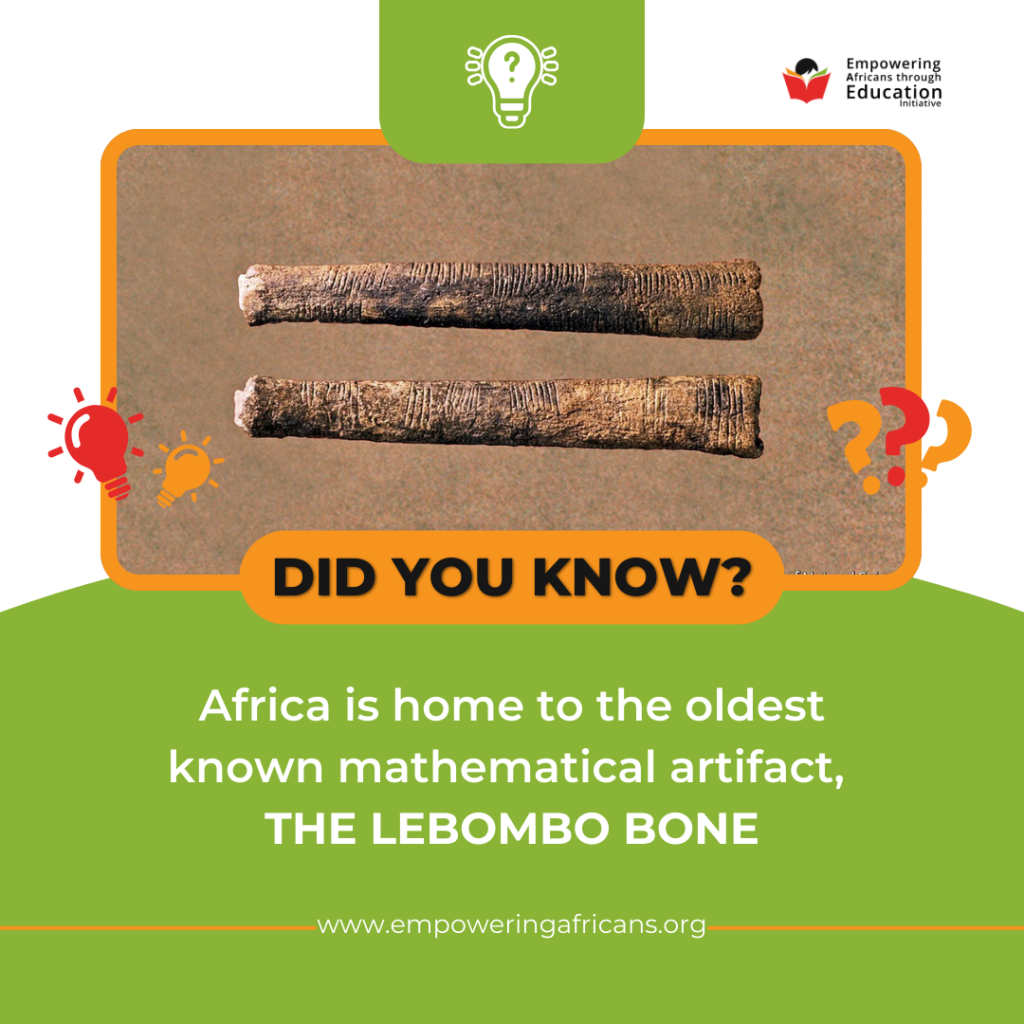Did You Know? Africa is Home to the Oldest Known Mathematical Artifact – The Lebombo Bone.

Africa, often celebrated as the cradle of humanity, is also the birthplace of one of the oldest known mathematical artifacts: the Lebombo Bone. This remarkable piece of history not only sheds light on the ingenuity of early civilizations but also underscores Africa’s foundational contributions to the global narrative of science, education, and innovation.
What is the Lebombo Bone?
The Lebombo Bone is a small, slender tool made from a baboon’s fibula, etched with 29 distinct notches. It was discovered in the Lebombo Mountains of Swaziland, near the border of South Africa, and is estimated to be about 35,000 years old.
This artifact is thought to have been used as a calendar or counting tool by the people of the Upper Paleolithic period. Some scholars theorize that it might have been utilized by women to track lunar cycles, marking one of the earliest known systems of timekeeping and mathematical record-keeping.
The Significance of the Lebombo Bone
The Lebombo Bone is not just a testament to Africa’s deep-rooted history but also to humanity’s innate desire to understand, measure, and organize the world. It serves as proof that early African societies engaged in complex thought processes and applied mathematics to solve real-life problems, such as tracking time or managing resources.
Impact on Education
The Lebombo Bone is a powerful educational tool, particularly in Africa, where it can inspire students and educators alike. By incorporating the story of the Lebombo Bone into curriculums, educators can:
- Foster Pride: Highlight Africa’s rich contributions to mathematics and science, empowering students to take pride in their heritage.
- Promote Innovation: Show that problem-solving and creativity have always been integral to human progress, encouraging students to develop solutions to contemporary challenges.
- Make STEM Relatable: Connect ancient tools with modern science, demonstrating that the principles of STEM (Science, Technology, Engineering, Mathematics) have deep roots in human history.
Contributions to History and Innovation
The Lebombo Bone is a pivotal reminder that Africa has long been a hub of innovation. It reaffirms the role of early African societies in pioneering the mathematical and scientific concepts that underpin many of today’s technological advancements. This artifact, along with others like the Ishango Bone, challenges misconceptions about the continent’s contributions to global intellectual history.
Furthermore, the Lebombo Bone highlights the universality of human curiosity and the timeless quest to understand our world. It bridges the gap between the ancient and modern, proving that knowledge, no matter how rudimentary it may seem, serves as the foundation for future breakthroughs.
Conclusion
The Lebombo Bone is more than a piece of carved bone—it is a symbol of Africa’s ingenuity, resourcefulness, and leadership in early mathematics. Its discovery and interpretation not only enrich our understanding of human history but also inspire a new generation of learners to embrace the spirit of innovation.
Africa’s story, as told through artifacts like the Lebombo Bone, reminds us that the seeds of progress were sown long ago on this remarkable continent, and their influence continues to shape our world today.